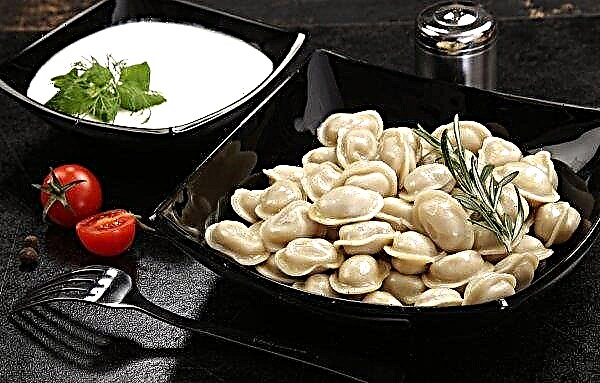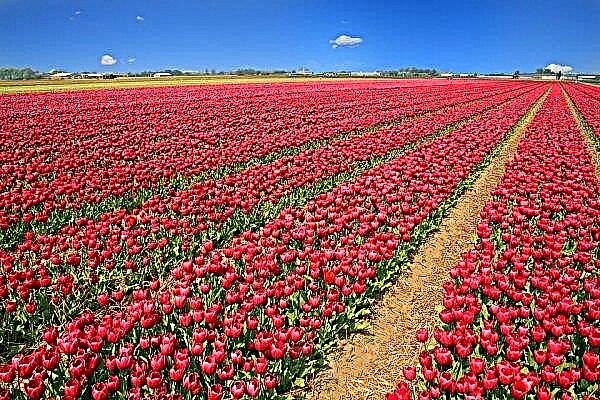Many people love the fragrant and sweet pulp of melons and watermelons, so the names of these fruits have long been familiar. Few people know what this delicacy is from a scientific point of view. From this article you will find out why a watermelon is a berry, no matter how strange it may sound, but a melon does not belong to those.
What is a berry?
First you need to find out what a fetus is. Science gives such a definition that is familiar to us: this is a ripened testis of a flowering plant, containing reproductive organs (seeds), edible and inedible, with hard, soft or fibrous pulp.
Did you know? The largest fruits known to science are produced by the giant pumpkin species. Their weight can exceed 1000 kg.
The fruit is the result of fertilization: the flower has bloomed, was pollinated and tied to an organ containing seeds in its pulp for future production of new plants.
Berry in botany is any fruit that has one or more seeds and completely edible flesh (skin and pulp) without a kernel. The peel of the berry is thin, and in the case of many seeds they are distributed throughout the pulp. Thus, gooseberries and currants, bananas, kiwis, tomatoes, etc. fall under this concept. At the same time, the berries known to everyone (strawberries, wild strawberries and rose hips) are false, because in addition to the ovary, the receptacle also participates in the growth of the fruit.
Why melon is not a berry
In botany, melon is attributed to fruits, multi-seeded pumpkins.
In its internal structure, it is similar to a berry, however, it does not apply to them because of the combination of such signs:
- the peel is thick and not edible;
- a hollow space forms in the middle;
- the seeds are concentrated in the center, and not distributed over the pulp.
Important! In cooking, melon is called fruit. However in botany fruits are not divided into fruits and vegetables - such a terminology is not scientific, but commercial and domestic, existing by virtue of tradition and for the sake of convenience.
Watermelon and melon in terms of botany
Both watermelon and melon are an annual herb with a long thin stem, yellow unisexual flowers up to 2.5 cm in diameter, and large (predominantly) edible fruits. The place of their cultivation is called melon, and they themselves, respectively - gourds.
Watermelon ordinary has a creeping stalk with tripartite leaves on long petioles. From a scientific point of view, its fruits belong to berries, despite its large size. But, strictly speaking, watermelon is a false berry, as it has a hard and inedible peel.
The watermelon fruit contains about 92% water and 6% sugar, which makes its pulp very sweet. It is an excellent source of vitamin A, vitamin C, vitamin B6 and vitamin B1, potassium, magnesium, carotenoid antioxidants, and lycopene. They are eaten fresh, salted or pickled. There are many varieties: with green, light green, gray and yellow peel, often painted with dark and light stripes. The pulp is also different: red, pink or yellow. There are brown seeds inside the pulp, although there are artificially bred seedless varieties.
Most watermelons have a rounded shape, but in Japan they are artificially grown square or triangular, which makes them convenient for transportation.
Did you know? Watermelon seeds were discovered in the tomb of the Egyptian pharaoh Tutankhamun.
Melon is an absolutely non-frost-resistant weaving plant with large lobed leaves. Melon fruits vary greatly in size, shape, surface texture, color and taste of the pulp, depending on the variety.
Almost all culinary varieties belong to the species Cucumis melo L. The culture is grown to produce aromatic edible fruits, mainly in Central Asia and other warm regions around the world. Most commercial varieties of Cucumis melo have a sweet flesh, they are eaten fresh, although some varieties can be preserved or pickled.
Which family belongs to watermelon and melon
Both plants belong to the family Pumpkin (Cucurbitaceae), but belong to different genera. The common watermelon belongs to the genus Watermelon, and the melon belongs to the genus Cucumber (which includes the common cucumber). It is not difficult to notice their resemblance to common pumpkin. Family members have similar growing and care requirements, similar physical characteristics. For example, all cultures in this family are overgrown weaving vines, which usually have antennae and bright yellow flowers.
Important! Inexperienced gardeners often do not know what the close planting of melons and watermelons can lead to, and fear that plants undergo cross-pollination. In fact, pollination is possible only between members of the same species, which does not apply to these plants, therefore, these crops can quietly grow in neighboring beds.
From the foregoing, it becomes clear that watermelon and melon, despite the noticeable similarity, differ quite strongly. But for the average consumer it is not too important whether it is vegetables, berries or fruits - it would be tasty and sweet.












